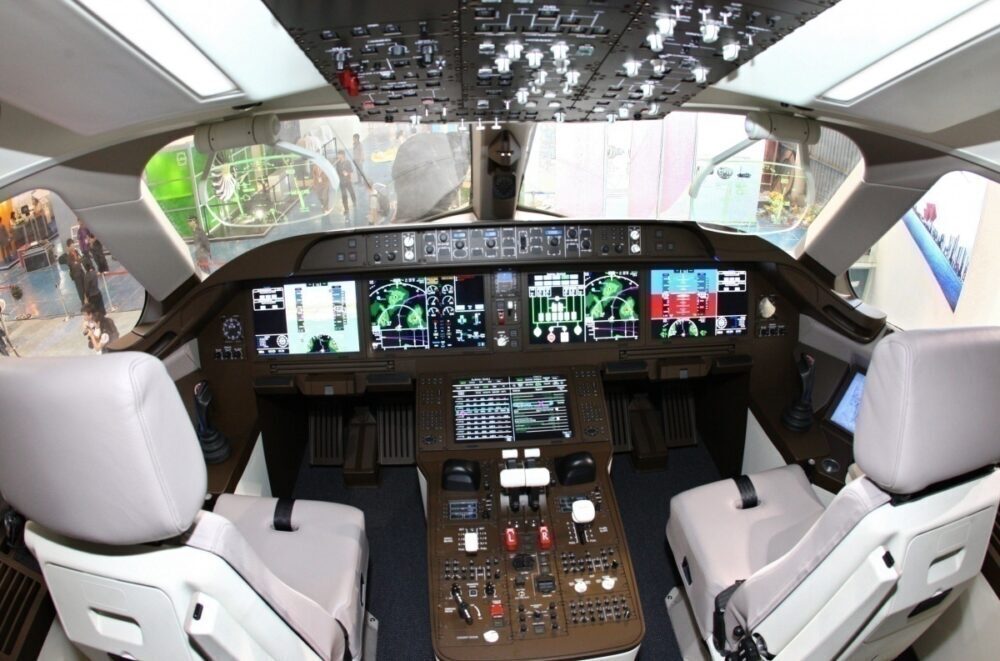Modern avionics have made navigation the least of the concerns for any pilot, with computers giving precise route coordinates. But how did aircraft navigate before GPS became a standard navigation tool? Aircraft used different methods to navigate pre-GPS, including dead reckoning, celestial navigation, and more.

The history
When aircraft first took to the skies in the 1900s, flights would just use visual aids for all navigations purposes, not requiring much hardware. However, with the entry of aircraft into military use, flying at higher altitudes and longer distances, navigation became essential for any flight.
The first guess many may have is that planes use their onboard radios to communicate with the ground, receiving instructions from the ground crew. While this was true for takeoff and landings, radios had a limited range, in terms of distance, meaning communication became impossible once aircraft were a few hundred miles away. Instead, crews had several manual ways to calculate their position.

Celestial navigation was a common method of finding a plane’s location, where navigators would use a bubble sextant to calculate the aircraft position relative to the sun, moon, or stars. This method was used up until the jet age in the 1960s, with early 747s even having a sextant port on the cockpit roof.
Dead reckoning was another very common navigation method on long flights. In dead reckoning, navigators would use previously known positions to estimate the plane’s current position using speed and flight time. While the weather could hamper these estimates, it was a relatively accurate way to find out your plane’s location.
To better provide information while in flight, ground bases would use a system known as LONAR. Two land-based radio transmitters would send each other signals at a set interval, allowing plane navigators to use the time difference to find their exact location. While this was an ideal solution, weather and frequency disruptions could easily distort the frequencies, leaving the crew with unreadable data.
On commercial aircraft
Planes have been flying commercially for decades now, but GPS has only come into active use in the last two decades. Prior to using GPS as we know it, modern aircraft had a number of other tools at their disposal.
Some may recall that flight decks previously used to have navigators onboard, a person dedicated to tracking the aircraft’s route and radio communications. This was mainly common on long flights over the ocean, where radar contact could be lost and fewer diversion airports were available. Modern avionics, and a push to reduce inflight crew, has resulted in these navigators now no longer being needed on commercial flights.

The beginning of the jet age also marked the introduction of a new navigation method: inertial navigation systems (INS). The INS phased out older celestial systems, relying on highly sensitive motion and rotation sensors instead. This marked the first use of partially-computerized navigation sensors, a trend that would continue until GPS became standard on all flights.
The INS systems also made aircraft navigators mostly redundant, which is why no modern aircraft has a navigators seat. The introduction of the inertial navigation system revolutionized flight navigation, allowing pilots to follow set flight paths based on their current positions and take the guesswork out of the calculations.
The advent of GPS
GPS, or Global Positioning System, actually came into operation well before it became a mainstay in all cockpits and mobile devices. GPS was initially created for military purposes only, with the project starting in 1973 and the first satellite launching in 1978.
However, in 1983, President Ronald Reagan signed an executive order allowing passenger aircraft to use the system once it was fully operational. The reason to allow GPS for commercial use was due to the recent Korean Air Lines crash in 1983. KAL007 crashed after it was shot down by Soviet fighter aircraft due to the plane mistakenly entering Soviet airspace on its way to Seoul. In response to the crash, the US authorized the use of GPS for flights to provide for more accurate navigation.

In 1994, the FAA authorized the use of GPS on aircraft, setting up the next generation of aircraft navigation. Soon after, GPS became available for mobile devices too, which is what makes Google Maps and flight tracking software work.
A long journey
Aircraft navigation has come a long way from pilots flying with little information to having everything on a screen before them. While older methods of navigation are gone from the cockpit, pilots still learn many older tools. Dead reckoning continues to be taught to pilots, even if they fly aircraft with GPS. This is because technology can fail, forcing pilots to manage the aircraft manually.
Aircraft navigation continues to evolve even today. Companies are already developing the next generation of technology to allow for autonomous flight, making pilots redundant the same way navigators did.

What do you think about older navigation methods? What will be the next breakthrough in aviation? Let us know in the comments!
[ad_2]
Source link


